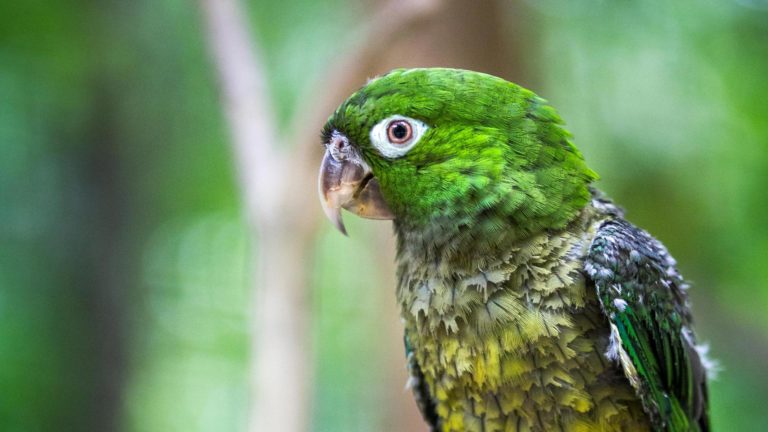Jamaican Parakeet Eupsittula nana
Taxonomy
Scientific name:
Eupsittula nana
Family:
Psittacidae
Genus:
Eupsittula
Species:
Nana
Common names:
Olive-throated parakeet, Jamaican parakeet
Biology
Morphology:
Jamaican parakeets are green on their head, back, and tail. Their throat and upper breast area are olive, hence also the name olive-throated parakeets. Lower on the body they are more olive and the tip of their wings is blue. Their eyes are orange and the bare skin around the eye is a cream color. They have a bone-gray colored beak and their feet have a pink-grey tone. They are 20 to 26 cm long.
Reproduction:
Jamaican parakeets breed one time between April and May. They nest in termite holes and lay 3 to 5 eggs which hatch in 26 to 27 days. After about 50 days the fledglings leave the nest.
Diet:
They feed from seeds, fruits, legumes, leaves and flowers. They can be seen eating in trees and corn fields as well as in other crop fields.
Ecology
Range:
Vastly distributed through Central America (from Mexico to Panama) and some caribbean islands (Cayman Islands, Jamaica and The Hispaniola).
Habitat:
Extended in wooded hills, mountain slopes, bushes, fields and gardens in wetlands or semi-arid areas from sea level up to mid-elevation forest.
Threats
Furtive hunting at a small scale for pet trade as well as for food or pest control in crop fields.
IUCN Red List: Near threatened.

